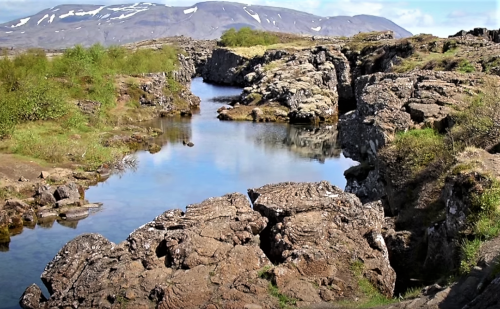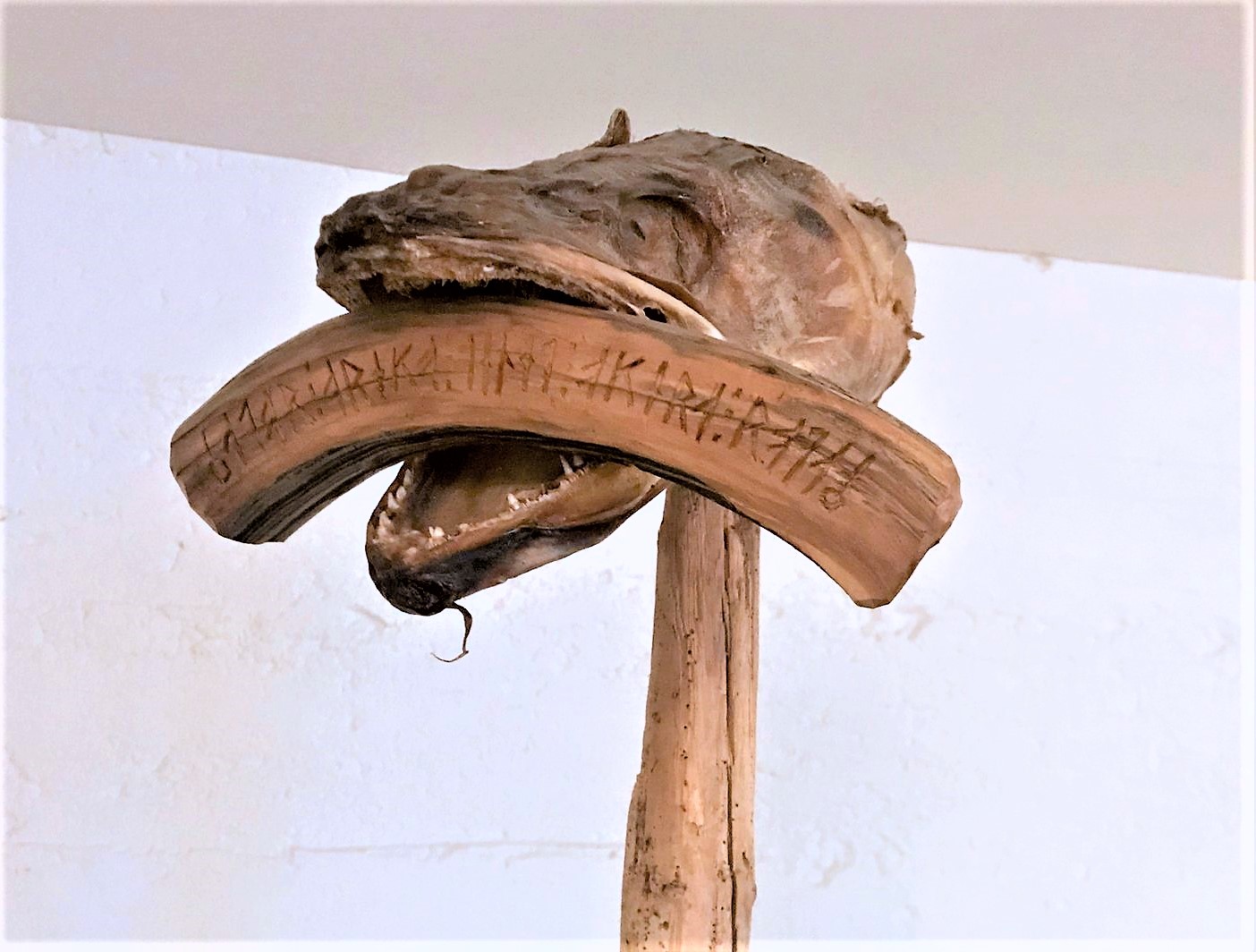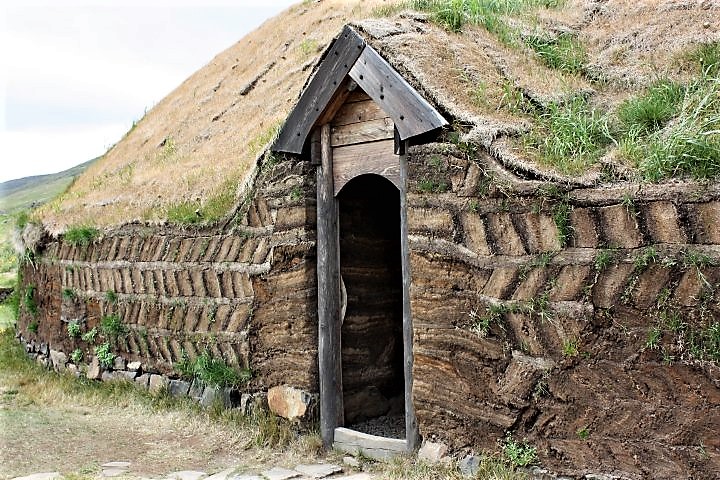Instructions on how to perform sorcery survives
 |
| Memorial of the Icelandic pastor, Björn Halldórsson (1724-1794), who first cultivated potatoes in Sauðlauksdalur in the Westfjords. “Sunny” by Rob Oo is licensed under CC BY 2.0. |
 |
| Landscape in Strandir in the Westfjords where sorcery was heavily practiced. “Scenes from the Strandir coast in the Westfjords” by Jennifer Boyer is licensed under CC BY-ND 2.0. |
 |
| “Gufudalur” by Delphinidaesy is licensed under CC BY-NC 2.0. |
 |
| Iceland’s most comprehensive sorcery museum is located in Strandir. “Museum of Icelandic Sorcery & Witchcraft“ by Jennifer Boyer is licensed under CC BY-ND 2.0. |
 |
| Shortly after sunrise in Strandir. “moon over strandir“ by Smülli is licensed under CC BY-NC 2.0. |
Galdur
White magic
Black magic
The more darker kind of magic or demonized magic. These were supernatural powers used for the evil purposes.
Varnargaldur
 |
| Borgarnes. “Borgarnes_170917_0919” by Raico Rosenberg is licensed under CC BY-NC-ND 2.0 |
Seiðr
Seiðr was magic practiced by females. The Norse goddess Freyja was one of them. It was considered shame for men to practice such lesser magic. Nonetheless, the Norse god Óðinn was taught this type of magic and known to practice it as well.
Unlike Galdur, Seiðr required the sorcerer to enter an altered or trans-like state.
 |
| A sorcerer’s kitchen. A display inside the Sorcerer’s Cabin at the Museum of Witchcraft and Sorcery. “the Sorcerer’s Cottage“ by Jennifer Boyer is licensed under CC BY-ND 2.0. |
Books and Manuals
Iceland has a collection of books, pamphlets, parchments, documents, etc on magic. Some of them are listed below.
Íslensk Galdrabók (Icelandic Book of Magic)
 |
||
| The cover of Galdrabók (Boof of Magic). “Kat nr 062 Svartkonstbok, från Island” by Bengt A Lundberg / Riksantikvarieämbetet is licensed under CC-BY-2.5 |
Graphic signs
Spoken/written words
Natural substances
Galdrakver (Little Book of Magic)
 |
| Pages from Galdrakver. “Galdrabók” by Ræveðis is licensed under CC0-1.0. |
 |
| Pages from Galdrakver. The symbol on the right is Ægishjálmur or the Helm of Awe. “Galdrakver” by Ræveðis is licensed under CC0-1.0. |
Gráskinna (Gray Leather)
Gráskinna at Hólar
 |
| Hólar in 1813/1814. The old church is located in the center of the village. “Iceland; or the Journal of a residence in that island, during the years 1814 and 1815 … Illustrated with a map and engravings. The second edition“ by the British Library is licensed under no known copyright restrictions. |
Gráskinna at Skálholt
 |
| Skálholt in 1772, painted by John Cleveley. “Skalholt” by Theturducken is licensed under CC-BY-2.0/ Cropped from the original. |
Rauðskinna (Red leather)
Huld Manuscript
 |
| A page from Huld Manuscript. The first part of the book consists of numbers and letters. “Huld Manuscript” by Ræveðis is licensed under CC0-1.0. |
 |
| A page from Huld Manuscript. The first part of the book consists of numbers and letters. The image above is, among others, the Svörturúnir or Black runes. “Huld Manuscript” by Ræveðis is licensed under CC0-1.0. |
 |
| Two pages from the symbol section of the Huld Manuscript. “Huld Manuscript” by Ræveðis is licensed under CC0-1.0. |
Kreddur Manuscript
 |
| Thjofastafur or the Thief Stave from the Kreddur Manuscript. Drawn by author using Sketchbook. |
 |
| A stave to avoid embarrassment. Using your ring finger on your right hand, draw this symbol with your saliva on your forehead. Drawn by author using Sketchbook. |
Svend Grundvig’s Collection
 |
| “Svend Grundtvig (1824-1883), Danish folklorist” by anonymous is licensed under Public Domain Mark 1.0 |
Jón Árnason Collection
 |
| “A portrait of Jón Árnason (1819 – 1888)” by Hans Peter Hansen is licensed under Public Domain Mark 1.0 |
Ólafur Davíðsson Collection
Ólafur collected various manuscripts from the 17th century which he published in 1903. It’s an account of the sorcery practiced in Iceland and the witch trials that took place in the 17th century.
In the next few posts we will delve deeper into the stories of the sorcerers and their magic.
 |
| “Portrait of Ólafur Davíðsson” by Unknown is licensed under Public Domain Mark 1.0 |



